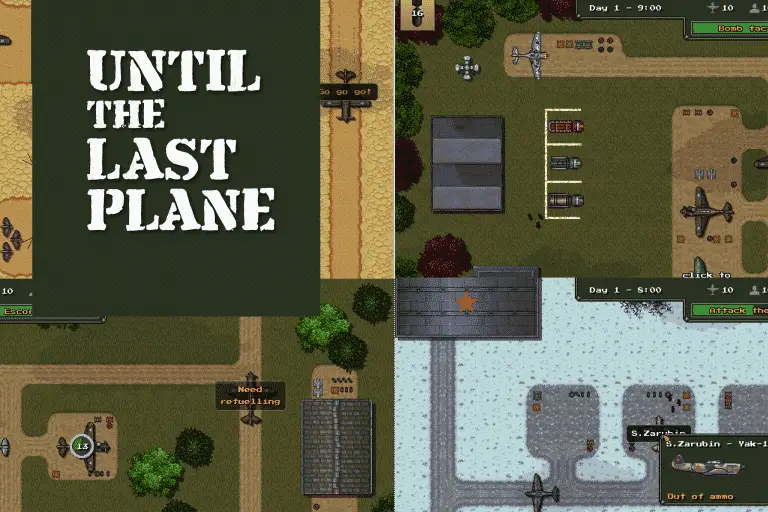The pixel graphics craze shows no sign of abatement as a whole generation of gamers yearn for the days of simpler games with 2d graphics, limited save slots that were less demanding on your time, though ironically, we all had a lot more time back then!
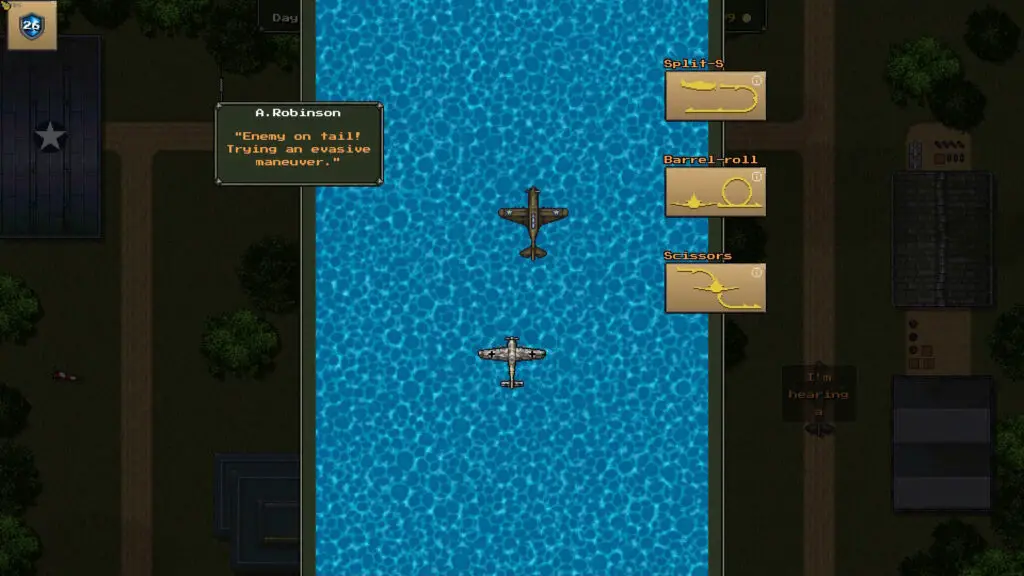
Until the Last Plane follows in the footsteps of the likes of Spelunky, Risk of Rain, and Into the Breach as it offers a pixel graphics strategy game set in WW2. You command an airfield from either the American, Soviet or German POV in three campaigns for each combatant, with an increasing difficulty curve.
You’ll start the game with an airfield with a number of buildings that are the hub for your efforts during the campaign. You’ll need to manage resources such as spare parts, fuel, and ammo as well as the vital resource of pilots and their planes. As a nice twist, each nation has a different mechanism for its resources with the Americans amply supplied, the Russians relying on political support for the commander to gain resources, and the Germans building resources based on the amount of “command points” you have.
In addition, you’ll shepherd morale and mechanics, the latter of which is vital to keeping the planes flying and armed. Mechanics are often in short supply and are representing by barely visible little pixel people running across your airfield to strip damaged parts, put out fires or load ammo into a plane.
Of course, at the heart of the game are the pilots and their planes. Each pilot is linked to their plane and there are stats for both, though you’ll have to dig to find them for the pilots as they are carefully hidden! Planes generally come in two main flavours, with a recon plane assigned to your airfield to find you new missions to take part in.
Fighters excel in dogfighting and don’t do as well in bombing whilst “attackers” basically are the opposite but both planes can handle themselves in both situations. The core gameplay loop sees you send out a recon plane to find missions, taking aerial photos and then selecting a mission which will ask you to attack enemy planes, bomb an enemy base or some other target.
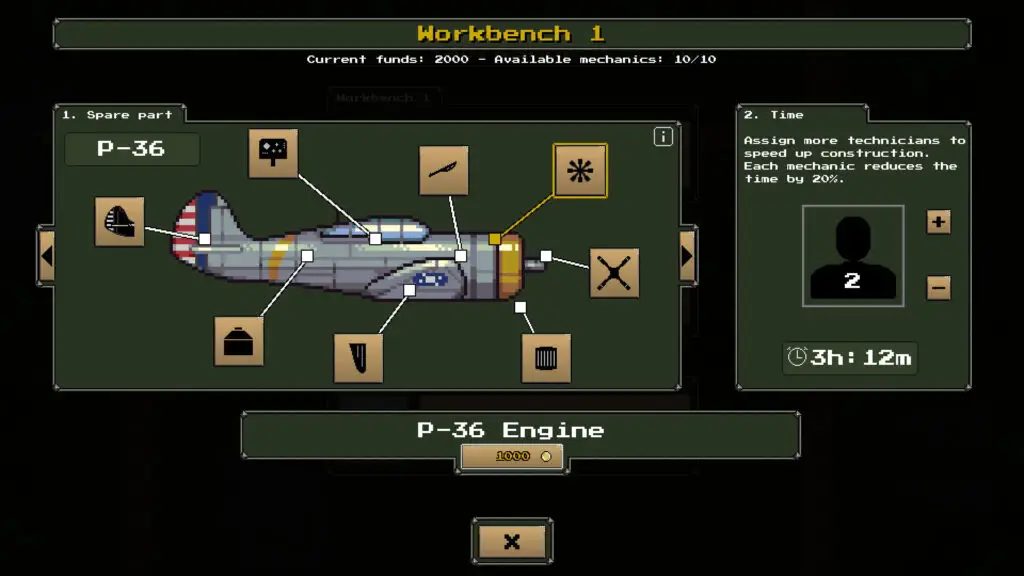
You’ll pick your pilots, trying to manage their fatigue and stress levels, as well as making sure their planes are kept in good nick. As they fly off on their missions, they will end up in encounters which will appear down the left-hand side of your screen. This element of the game is sort of in real-time, though you can pause the game but you can’t issue instructions.
Once you click on the icon, you’ll be taken to a “mini-game” such as a dogfight, a bombing run or an attempt to evade an enemy fighter that’s gotten behind you. The dogfight takes place in a turn based mode, as you make moves out of a menu of three, which vary depending on the type of plane you’re flying. You may be limited on the number of times you can select each option and you’ll have a limited number of moves, as will your opponent. If you end the session with the enemy in your “cone of fire”, which is not displayed before the battle, then you’ll shoot them down. Equally if they have a rear facing weapon, common with bombers, then you may catch some lead.
The evasion mode plays out in the inverse of the above as you will try to ensure that you don’t end up in the gunsights of your pursuer. There’s no way to turn the tables and all battles are strictly one on one duels here so no need to “stick with your wingman” here.
Bombing attacks play out a little differently. You pick your altitude for the attack and then the crosshairs of your bombsights line up on screen in real time and you hit the button to stop them and line them up on the vertical and horizontal axis in order to hit the target. The speed of the moment of the axis depends on altitude, the lower altitude the slower the axis will move, making it easier to hit the target but equally increasing the risk of being hit by an interceptor.
If one of your planes is hit, then the pilot will come back to the air strip, most of the time, and need repairs done. This is done simply by clicking on the plane, carrying out an inspection by clicking through the various symbols to figure out what the problem is and then clicking the replace the damaged part. Sometimes the plane may come down on fire and you’ll have a very short window to put the fire out first or the plane will blow, killing your pilot.
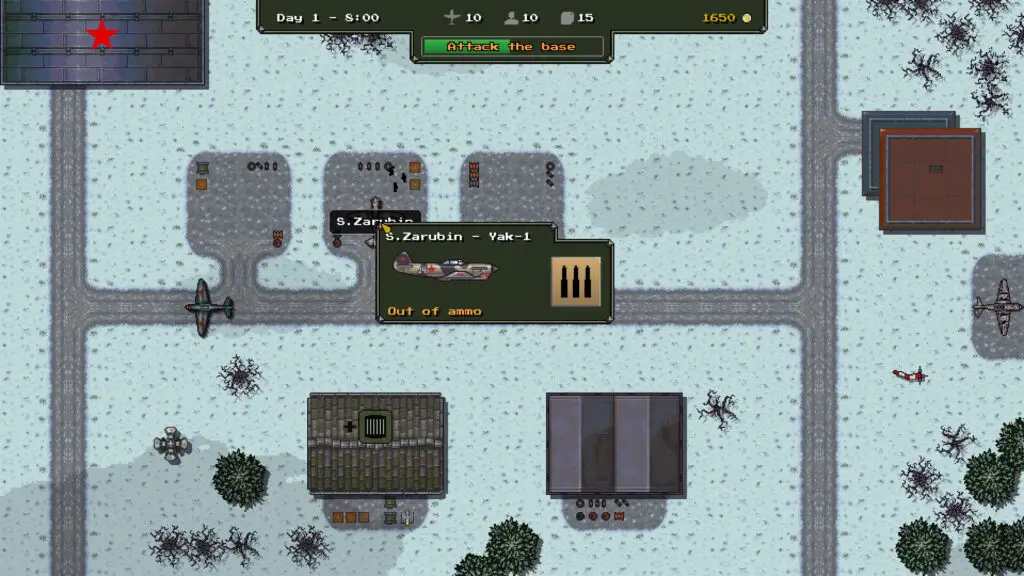
Generally speaking, at least in the early days, the survivability of your pilots and planes is high and once you’ve got a decent roster so you don’t need to send the same pilots up every time, you’ll find that you can generally keep them alive throughout the campaign. Pilots kills and missions, as well as rank are tracked but it’s quite trickly to form much of an attachment to the pilots as they are just names above a plane. An option to change them would definitely help in that respect!
There’s lots to like about “Until the Last Plane”, developed on a small budget and on a somewhat niche subject. The 16-bit graphics are cute but also functional and there’s more depth to the game than you might first think. The mini-games are all fairly simple and whilst the tutorial could be better, the game is fairly intuitive. There’s also a genuine difference between the different nations you play as, with not just different paint schemes but different planes, missions, and requirements for upgrades. For example, as the USAAF you’ll have plenty of resources and quickly be able to field a large squadron of fighters. However, as the Soviets, you’ll need to make every last spare part, bullet, and plane count.
There’s also a genuine difference between the different nations you play as, with not just different paint schemes but different planes, missions, and requirements for upgrades.
There are definitely some areas for improvement, which is understandable given the game is early in its lifespan. As mentioned above, it’s hard to form an attachment to your pilots as they are just surnames and their stats are hidden unless you hover over them with your mouse pointer. Giving the player a dedicated paused pilot screen so you can look at your pilots history, their names and maybe even a small 16-bit pixel portrait would all add to a sense of immersion.
Some of the mini-games also feel more like a challenge of the reflexes than the mind and there’s a lot of repetition as you’ll play dozens of the same sort of mission. Whilst you can gradually upgrade your squadron and your pilots will improve, the gameplay stays much the same, albeit with increases in difficulty level.
The dogfights feel a bit simplistic at the moment and in terms of realism, not that the game is setting out to be a dry grognard style sim, the game sees far too many kills scored with my pilots in my last USAAF campaign averaging one kill per sortie, making more than half of them aces by the end of the first campaign.
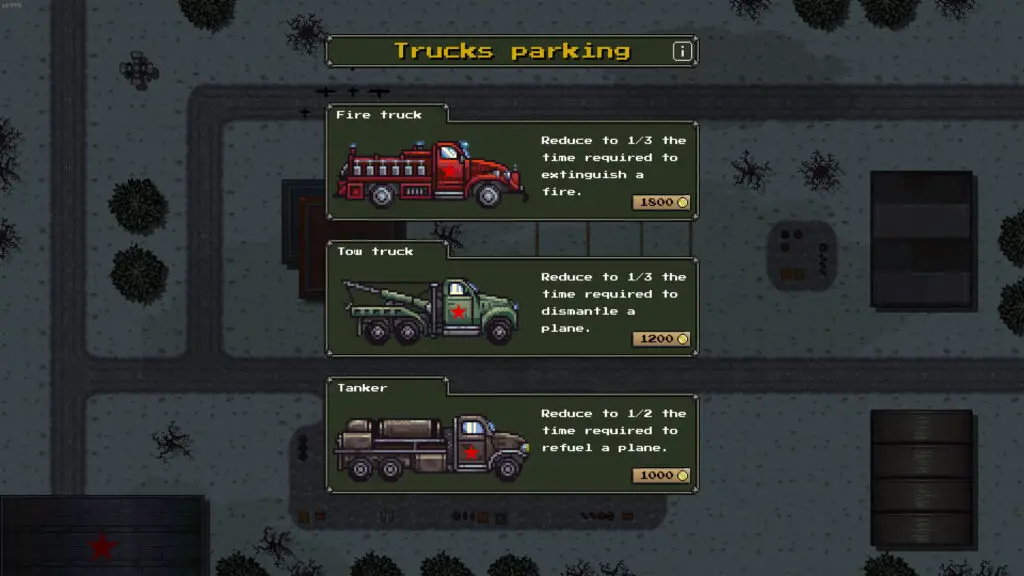
You also can’t carry your squadron over between campaigns at the moment which also creates a bit of barrier to immersion and long-term play. Missions play out quickly and you can complete an entire campaign in about an hour and a half.
Still, the developer is very active and is keen to take on feedback. The first update is due soon which will introduce bonds between the pilots, sort of like a slimmed down version of Fire Emblem, so that they will fight better when flying alongside their friends and suffer a major penalty if a friend is killed in action. Until the Last Plane has a lot of charm and is a small indie production, it is certainly a nice diversion and hopefully, with some updates, it’ll gain a bit more staying power and immersion to make it worth coming back to.

